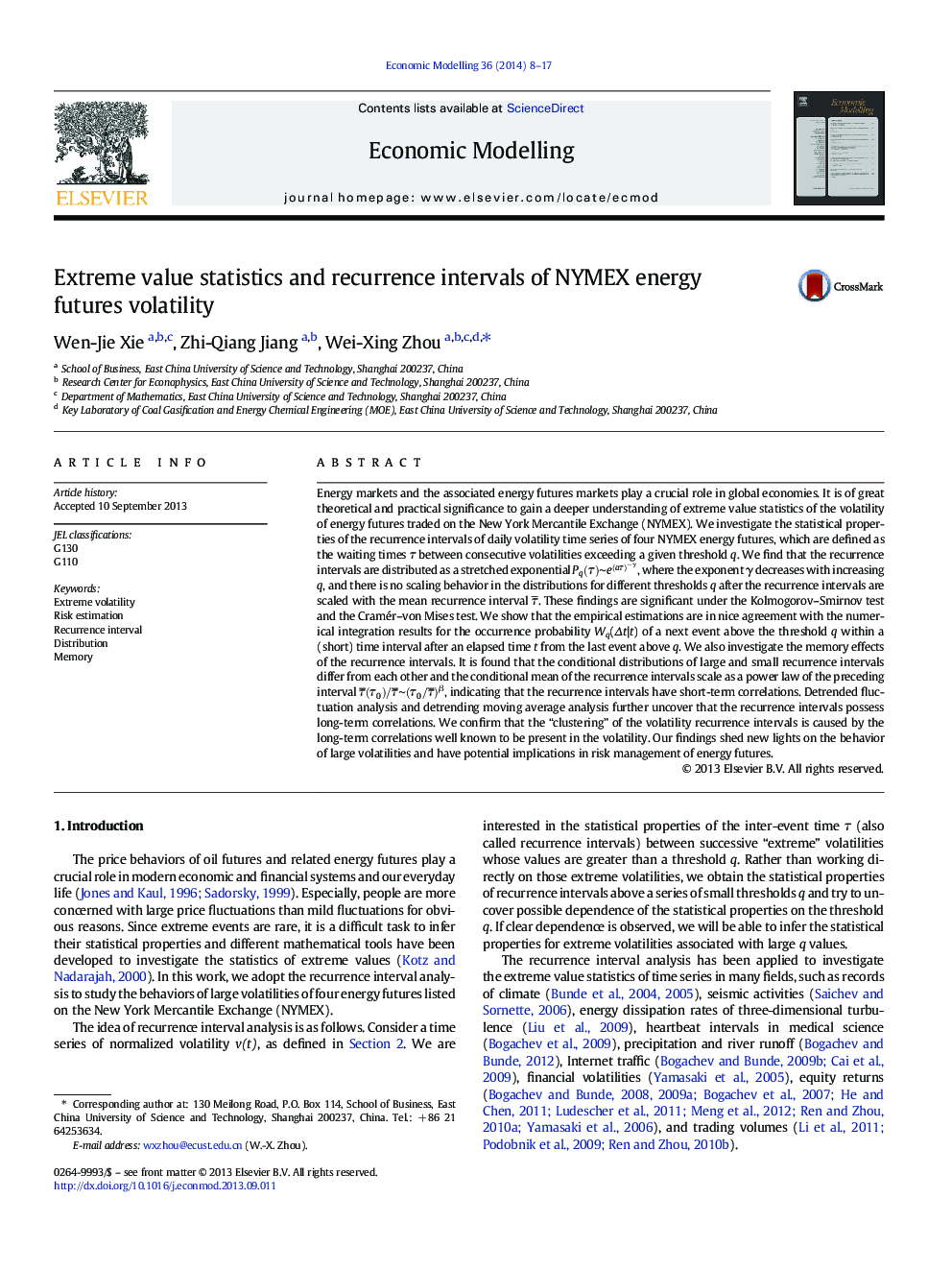| Article ID | Journal | Published Year | Pages | File Type |
|---|---|---|---|---|
| 5054265 | Economic Modelling | 2014 | 10 Pages |
Abstract
Energy markets and the associated energy futures markets play a crucial role in global economies. It is of great theoretical and practical significance to gain a deeper understanding of extreme value statistics of the volatility of energy futures traded on the New York Mercantile Exchange (NYMEX). We investigate the statistical properties of the recurrence intervals of daily volatility time series of four NYMEX energy futures, which are defined as the waiting times Ï between consecutive volatilities exceeding a given threshold q. We find that the recurrence intervals are distributed as a stretched exponential PqÏâ¼eaÏâγ, where the exponent γ decreases with increasing q, and there is no scaling behavior in the distributions for different thresholds q after the recurrence intervals are scaled with the mean recurrence interval ϯ. These findings are significant under the Kolmogorov-Smirnov test and the Cramér-von Mises test. We show that the empirical estimations are in nice agreement with the numerical integration results for the occurrence probability Wq(Ît|t) of a next event above the threshold q within a (short) time interval after an elapsed time t from the last event above q. We also investigate the memory effects of the recurrence intervals. It is found that the conditional distributions of large and small recurrence intervals differ from each other and the conditional mean of the recurrence intervals scale as a power law of the preceding interval ϯÏ0/ϯâ¼Ï0/ϯβ, indicating that the recurrence intervals have short-term correlations. Detrended fluctuation analysis and detrending moving average analysis further uncover that the recurrence intervals possess long-term correlations. We confirm that the “clustering” of the volatility recurrence intervals is caused by the long-term correlations well known to be present in the volatility. Our findings shed new lights on the behavior of large volatilities and have potential implications in risk management of energy futures.
Related Topics
Social Sciences and Humanities
Economics, Econometrics and Finance
Economics and Econometrics
Authors
Wen-Jie Xie, Zhi-Qiang Jiang, Wei-Xing Zhou,
